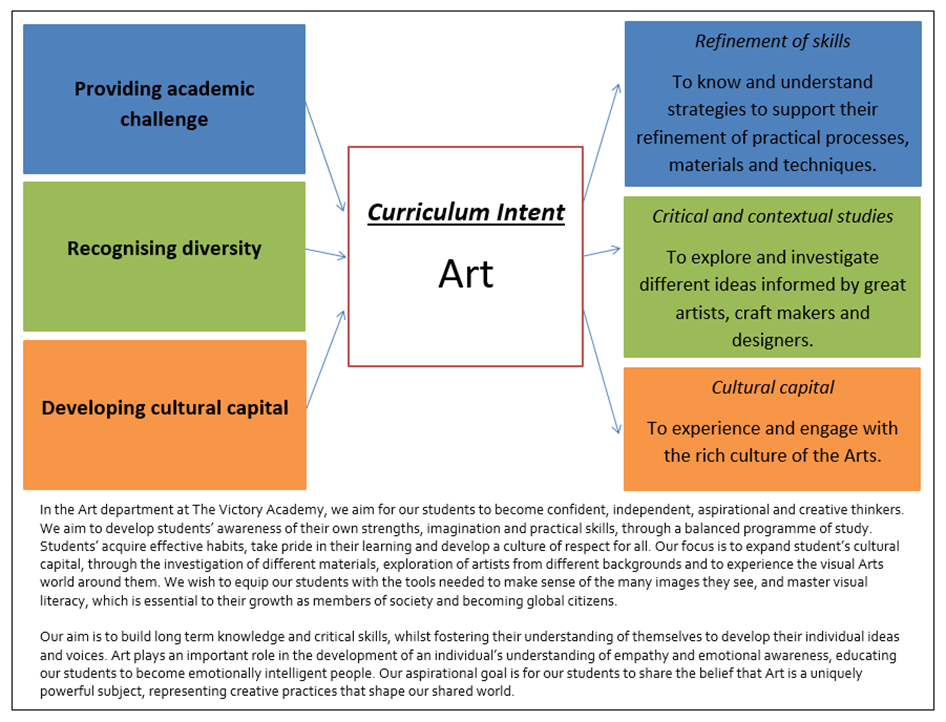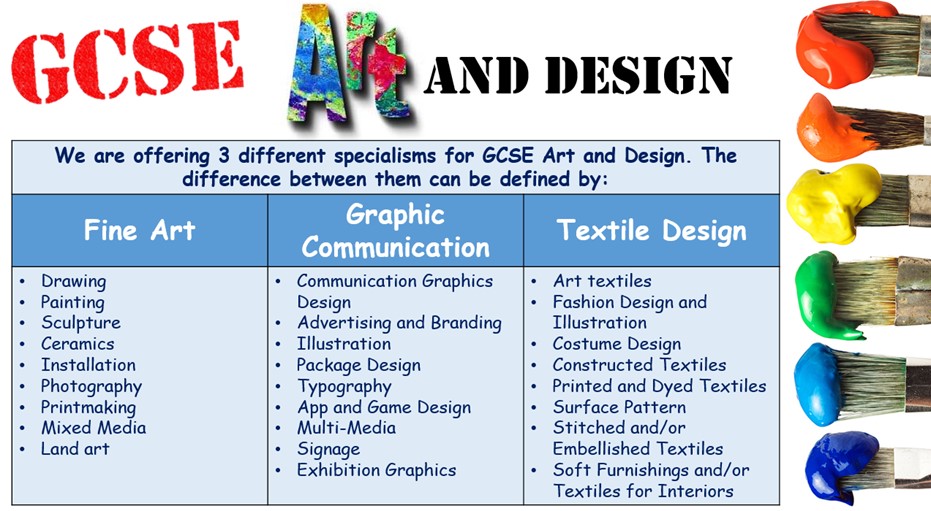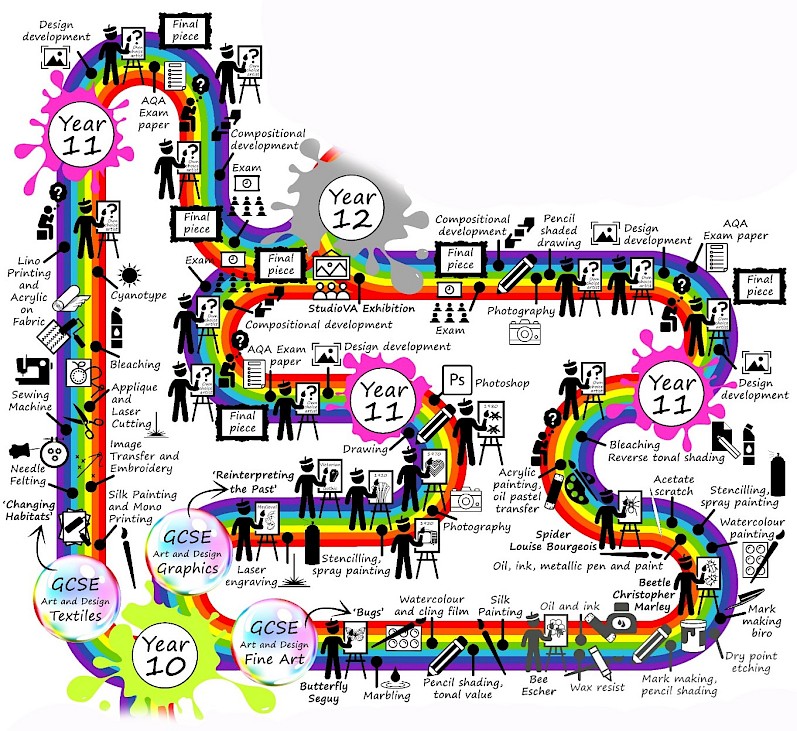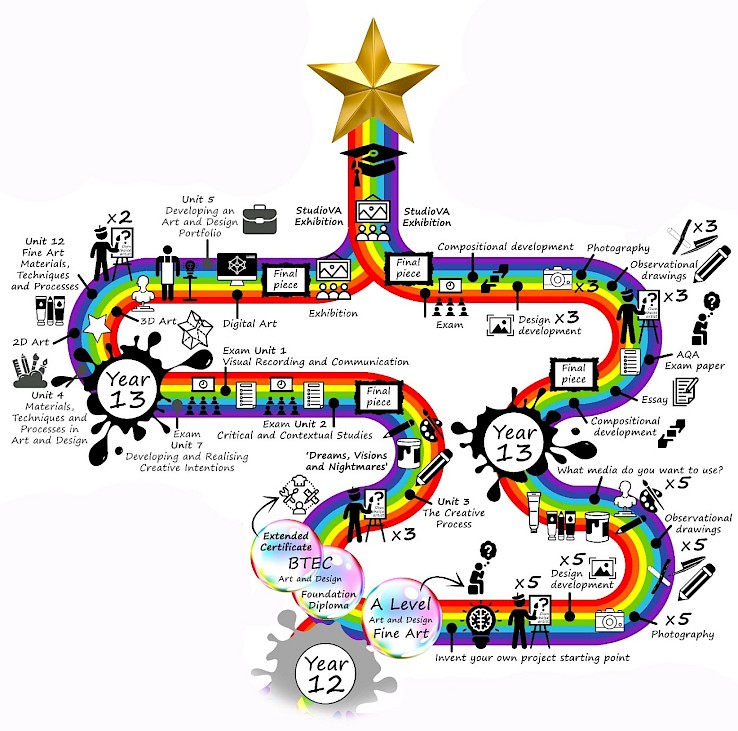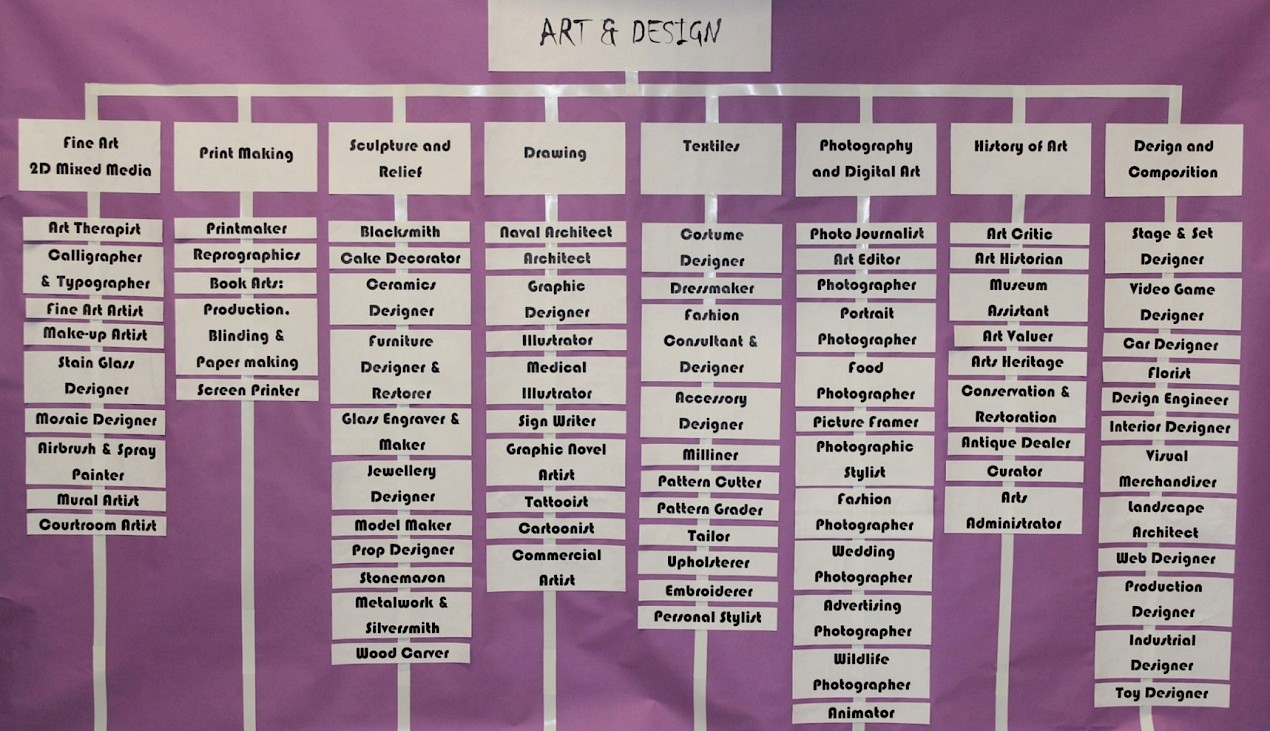Curriculum Structure - Key Stage 3
Implementation
Art, craft and design embody some of the highest forms of human creativity. A high-quality Art education should engage, inspire and challenge pupils, equipping them with the knowledge and skills to experiment, invent and create their own works of art, craft and design. As students progress, they should be able to think critically and develop a more rigorous understanding of Art and Design. They should also know how Art and Design both reflect and shape our history, and contribute to the culture, creativity and wealth of our nation.
Each unit students will learn a new skill based around the formal elements of art. Students will be taught to record their observations and develop confidence and skills in using pencil, paint, sculpture and printmaking techniques.
Students will study a different artist, art movement or art form within each project that will develop their understanding and cultural development of their own work and to be critical thinkers. From looking at art from a range of cultures students will gain a deeper understanding of the world around them and arts diverse role in society.
Students will be taught:
- To produce creative work, exploring their ideas and recording their experiences.
- To become proficient in drawing, painting, sculpture and other art, craft and design techniques.
- To evaluate and analyse creative works using the language of art, craft and design.
- To know about great artists, craft makers and designers, and understand the historical and cultural development of their art forms.
- To use a range of techniques and media, including painting.
- To increase their proficiency in the handling of different materials.
- To analyse and evaluate their own work, and that of others, in order to strengthen the visual impact or applications of their work.
- About the history of art, craft, design and architecture, including periods, styles and major movements from ancient times up to the present day.
Year 7

Welcome to the start of our Art curriculum journey. Year 7, follow a programme of study that is designed for students to experience working with a range of materials and learn about artists from different periods of time and movements, within Art history. The year 7 curriculum focuses on building knowledge and practical skills through the disciplines of drawing, painting, mixed media and three- dimensional work. We deliver multiple miniature projects throughout year 7 to build a foundation of knowledge and skills. Students will start their journey by developing their observational drawing skills and students use and understanding of colour theory. Within each project, a different artist is discussed and their work is viewed, analysed and then responded to through a practical activity. Each activity explores a different creative technique and process, from collage to printing and painting. There is a particular focus on the Art of portraiture and an introduction to relief sculpture. Throughout year 7, an emphasis is placed on building student confidence to discuss their work, working interdependently, analysing artists work and use of specialist Art vocabulary.
Year 8

Year 8 focuses upon building and expanding skills and techniques learnt in year 7, through longer sustained projects. Our year 8 curriculum focuses on three main projects. The year starts with a cultural fusion project, where students learn about the Mexican celebration of the Day of the Dead and the Buddhist tradition of Mandala. Within this project, students explore the fundamentals of composition, drawing and printmaking techniques to develop a cultural fusion design of their own. The second project focuses on visual language, learning to link emotions through colour and body language, developing drawing and design skills. This project also includes an illustration based collaborative mural and school house mascot design, that they develop to create a final piece, through the processes and techniques of ceramic sculpture. The third project of the year is formed around the theme of animals; this is an artist lead investigation, which develops to a final piece that is a personal response inspired by the artists studied. Throughout each of the three projects, students make final connections with the work of other’s, develop final ideas and outcomes, which they learn to evaluate using key specialist vocabulary.
Year 9

Our Year 9 curriculum is designed to prepare students for KS4 Art and Design. Students will be working on one sustained project throughout the year, formed around the theme of ‘Food’ they will explore and experiment with a wide range of media, techniques and styles. They learn to build their practical skills through the contemporary and historic styles of other artists and designers. Students begin the year developing their drawing skills, focusing on perspective, contour drawing, value and mark marking techniques to explore texture. Students then begin to build these fundamentals into colour, taking inspiration from a variety of contemporary artists to explore the techniques of a range of colour-based media, including pencils, paints and inks. After an exploration of 2D materials, students refine their knowledge and skills with 3D materials and techniques, experimenting with relief, moulding and casting. Later in the year students continue to build, their knowledge and practical skills through the art of printmaking and traditional methods of oil pastel drawing and painting. Throughout the project students research and investigate artists of different times, styles and specialisms to learn to interpret their own responses to these creative ideas. They will make final connections with the work of others, develop final ideas and evaluate using specialist vocabulary.
Impact
Students receive regular verbal and formative feedback to enable them to develop their skills across each discipline and will also complete a summative assessment at the end of each term. Summative assessments will take the form of students creating a series of experiments and a final piece which will be reflected on throughout projects and a grade will be fed back at the end. All students will be taught to analyse and evaluate their own work and the work of others in order to strengthen their outcomes. They are expected to know, apply and understand the matters, skills and processes specified in the programme of study.
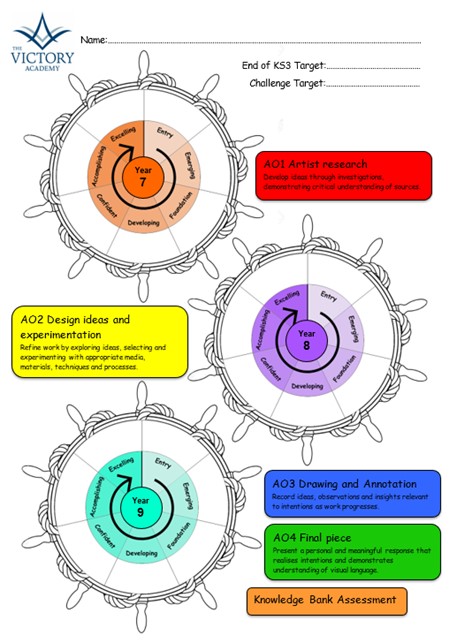
We provide a rich extracurricular activities programme and regular afterschool workshops to provide opportunities to develop creativity and an understanding of visual language. We celebrate the arts through the organisation of trips, visiting artists, exhibitions and competitions to provide students with a rich Arts experience.
